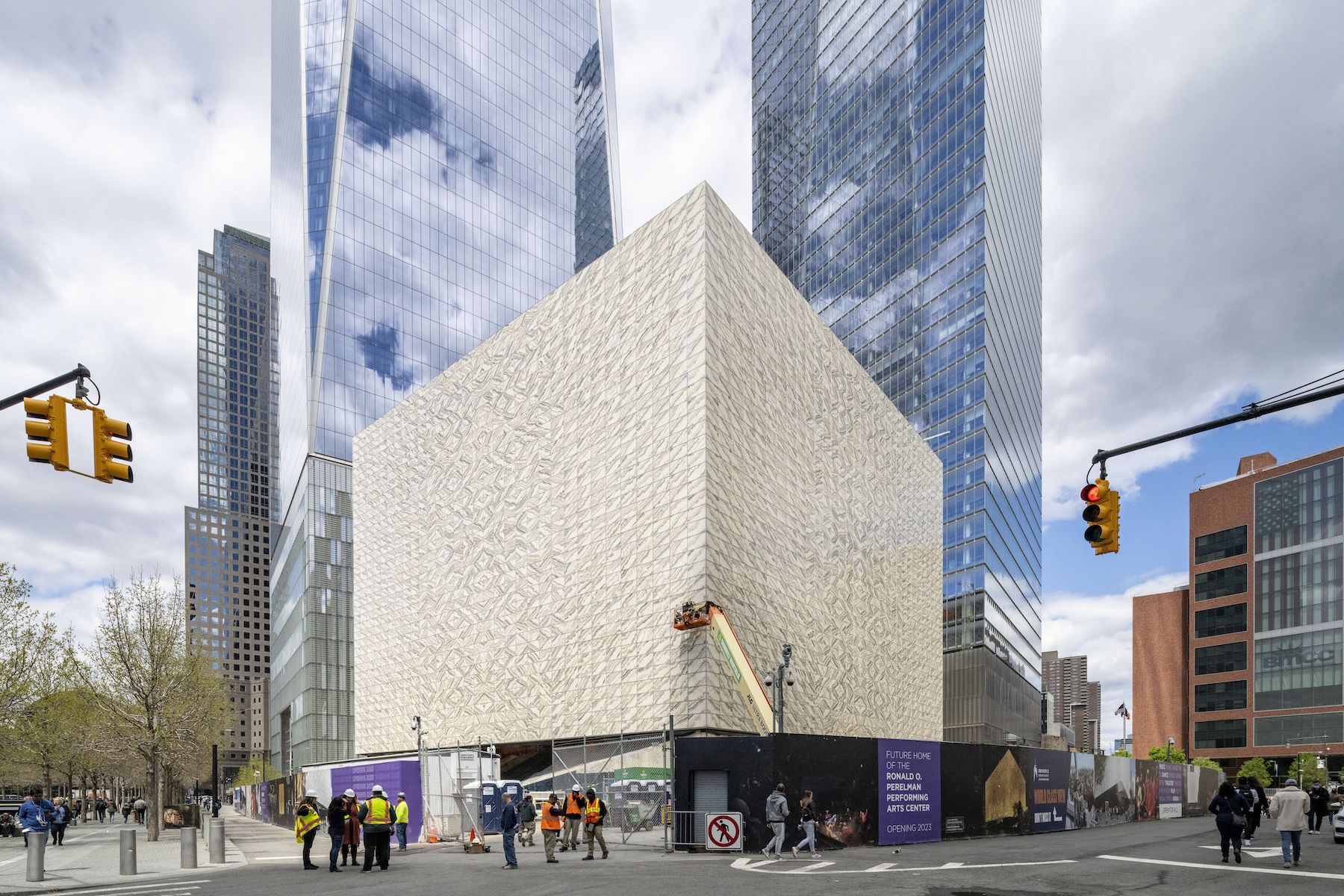The final public element for the rebuilding of the World Trade Center complex in New York City is a performing arts center that’s expected to open next September. That month will also mark the one-year anniversary of the opening of an adaptive reuse which converted what once was a greenhouse in Tarrytown, N.Y., into a flexible, 8,000-sf performance and rehearsal space, artists’ gallery and studio.
The architecture firm REX, working in collaboration with executive architect Davis Brody Bond, theater consultant Charcoalblue, and Threshold Acoustics, designed the eight-story, 138-foot-tall Perelman Performing Arts Center, located in lower Manhattan. The 129,000-sf cube-shaped PAC will provide new spaces for theater, dance, music, chamber opera, film, and media events.
Its three theaters—the John A. Zuccotti Theater, that can accommodate 450 seats; the Mike Nichols Theater, with a 250-seat capacity; and the Doris Duke Theater, which can have up to 99 seats—can be adjusted or combined into 10 different configurations.
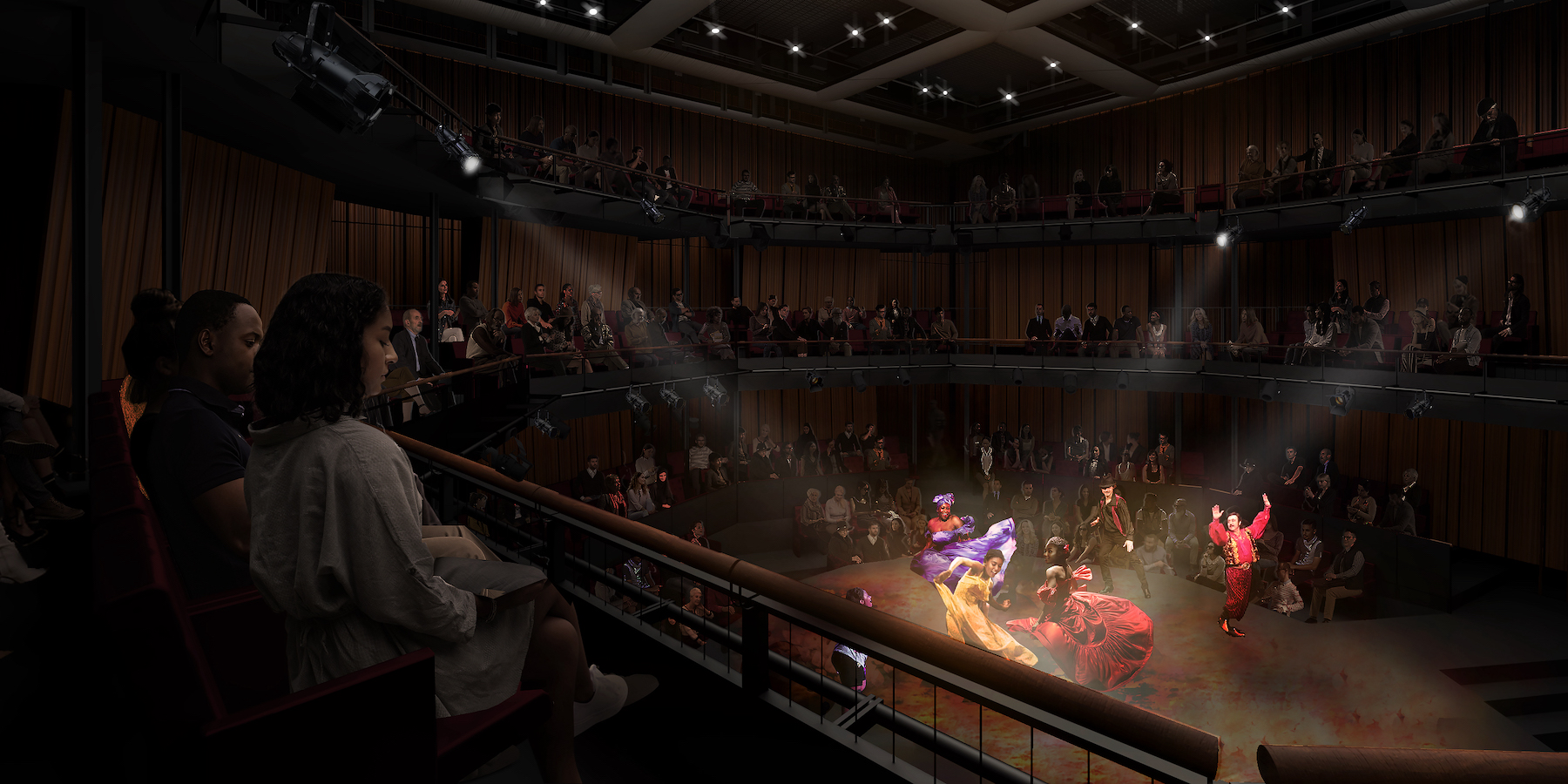
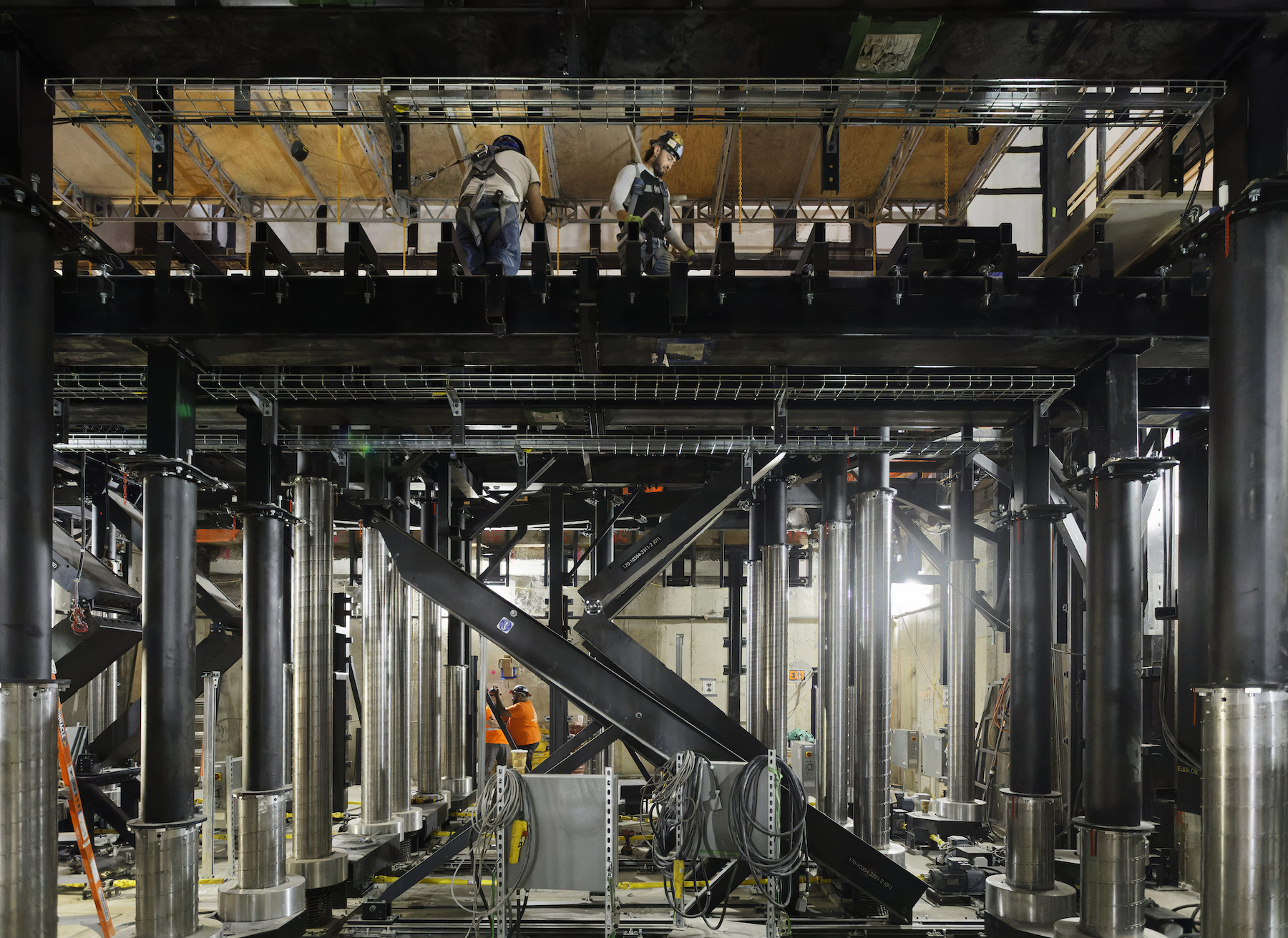
The PAC will be adjacent to the World Trade Center Oculus and Transportation Hub. Because it is being built over an existing subway and rail complex, the project’s structural engineer Magnusson Klemencic Associates devised a system that would support that building’s mass, consisting of seven mega columns through the existing infrastructure that hold aloft a belt-truss structure within which the PAC’s auditoria “float.”
The building’s exterior is wrapped with nearly 5,000 5x3-ft marble panels from Portugal, each weighing 295 lbs. (Front is the façade consultant.) Inside, the PAC is organized into three levels: a public level accessible by grand staircase or elevator that encompasses the lobby concourse and stage; an “artists” level with dressing rooms, green rooms, and wardrobe areas; and a “play” level for the three theaters and rehearsal space.
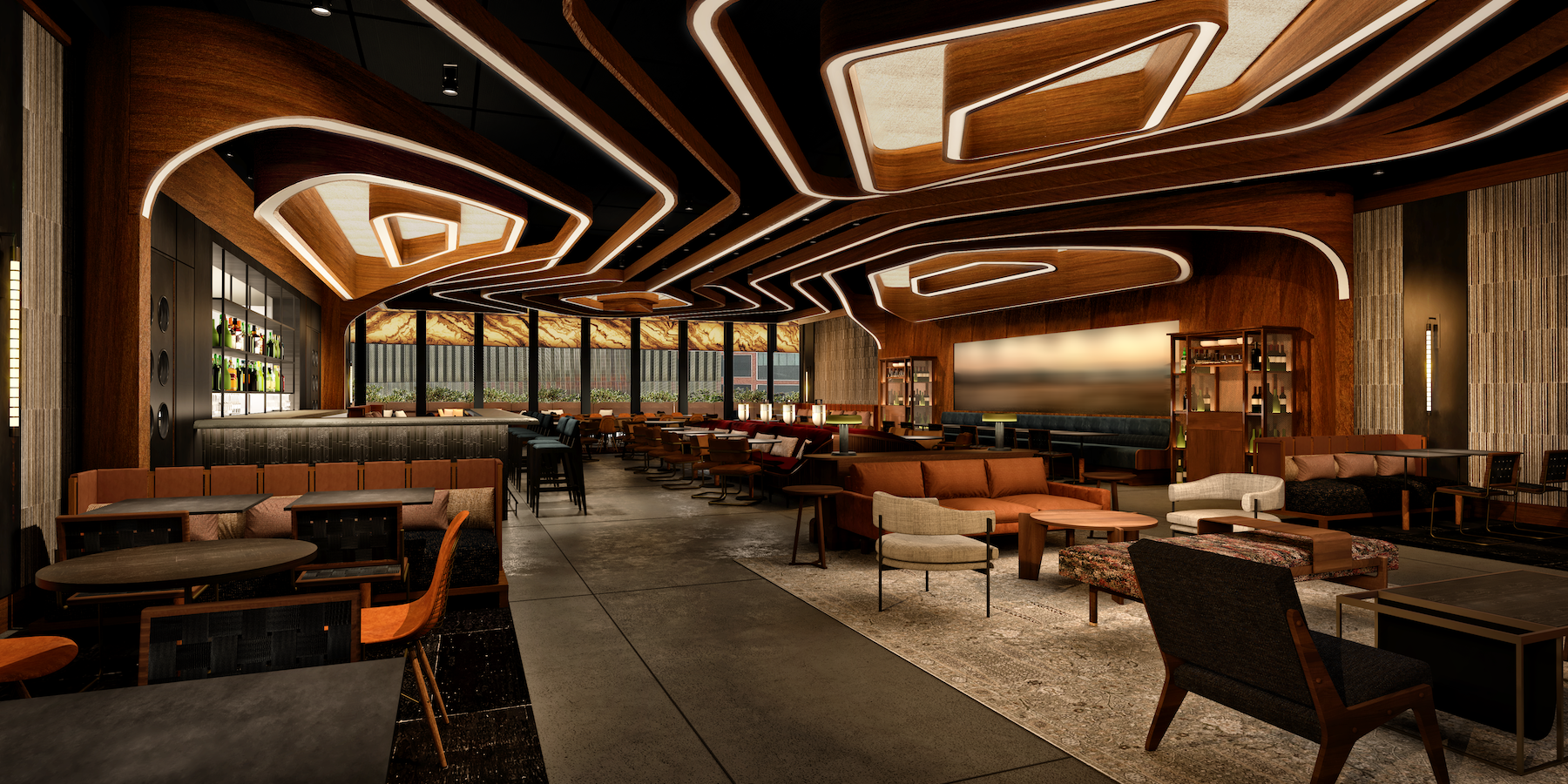
Rockwell Group designed the building’s lobby and restaurant concept restaurant. The project’s estimated cost is $500 million. Its building team includes Sciame (CM), ARUP (circulation consultant), Atelier Ten (sustainability consultant), and Wilson Ihrig (noise and vibration consultant)
From greenhouse to green performing arts center
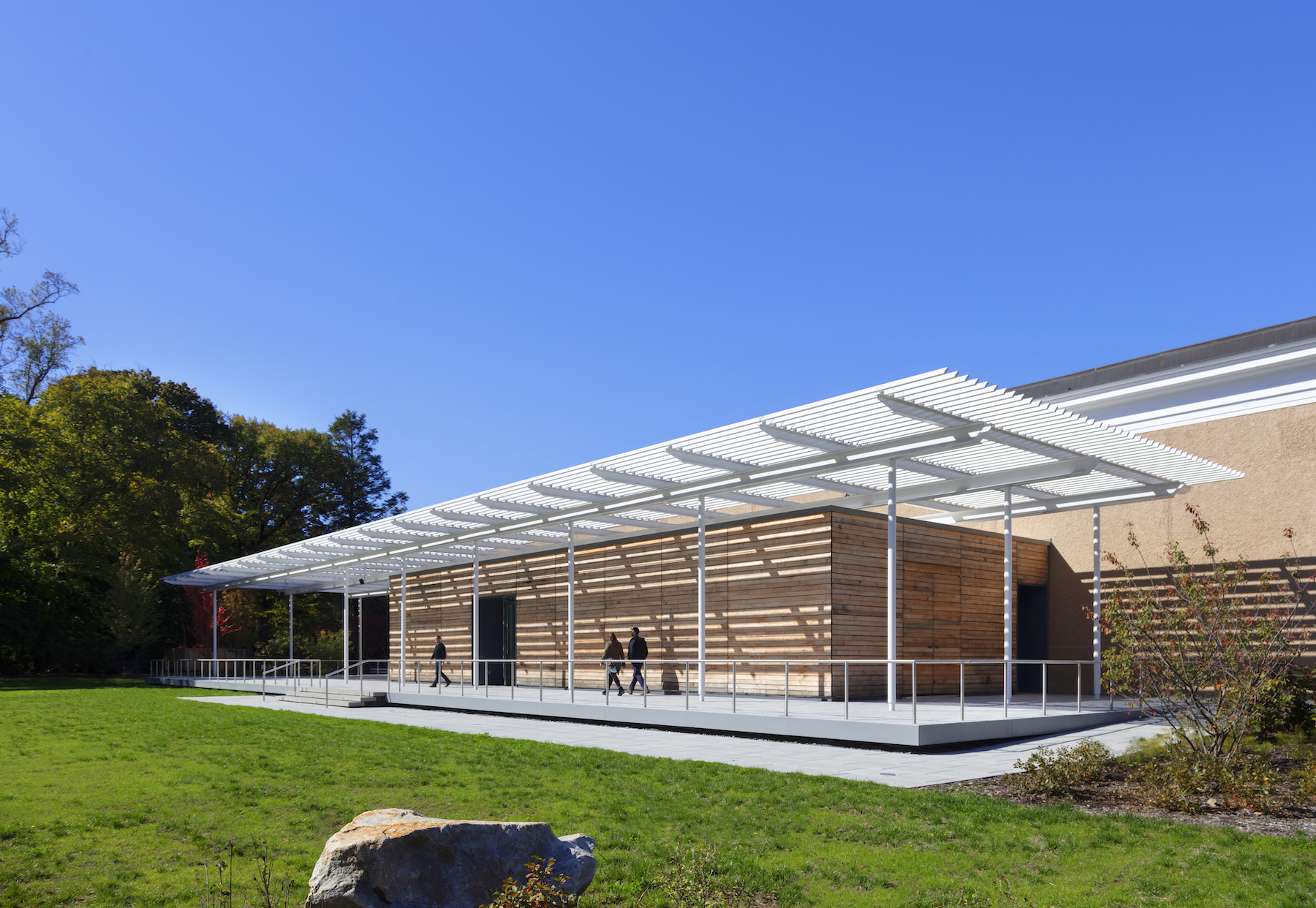
Pocantico Center, the 216-acre former Rockefeller family estate in Tarrytown, housed John D. Rockefeller’s historic Orangerie, an orange tree greenhouse with 26-ft-high ceilings, that was opened in 1906.
The Orangerie had long been dormant when the Rockefeller Brothers Fund hired the architecture firm FXCollaborative to rehabilitate the building into a multidisciplinary arts center that would also be a model for sustainable design, and inclusion.
This adaptive reuse, now called the David Rockefeller Creative Arts Center, “is rooted in supporting the creative process across artistic disciplines,” said Brandon Massey, AIA, LEED GA, Senior Associate at FXCollaborative, in a prepared statement. This renovation, at a cost of $26 million, was completed within the guidelines of the National Trust for Historic Preservation. (Li Salzman Architects was the project’s historic preservation consultant.)
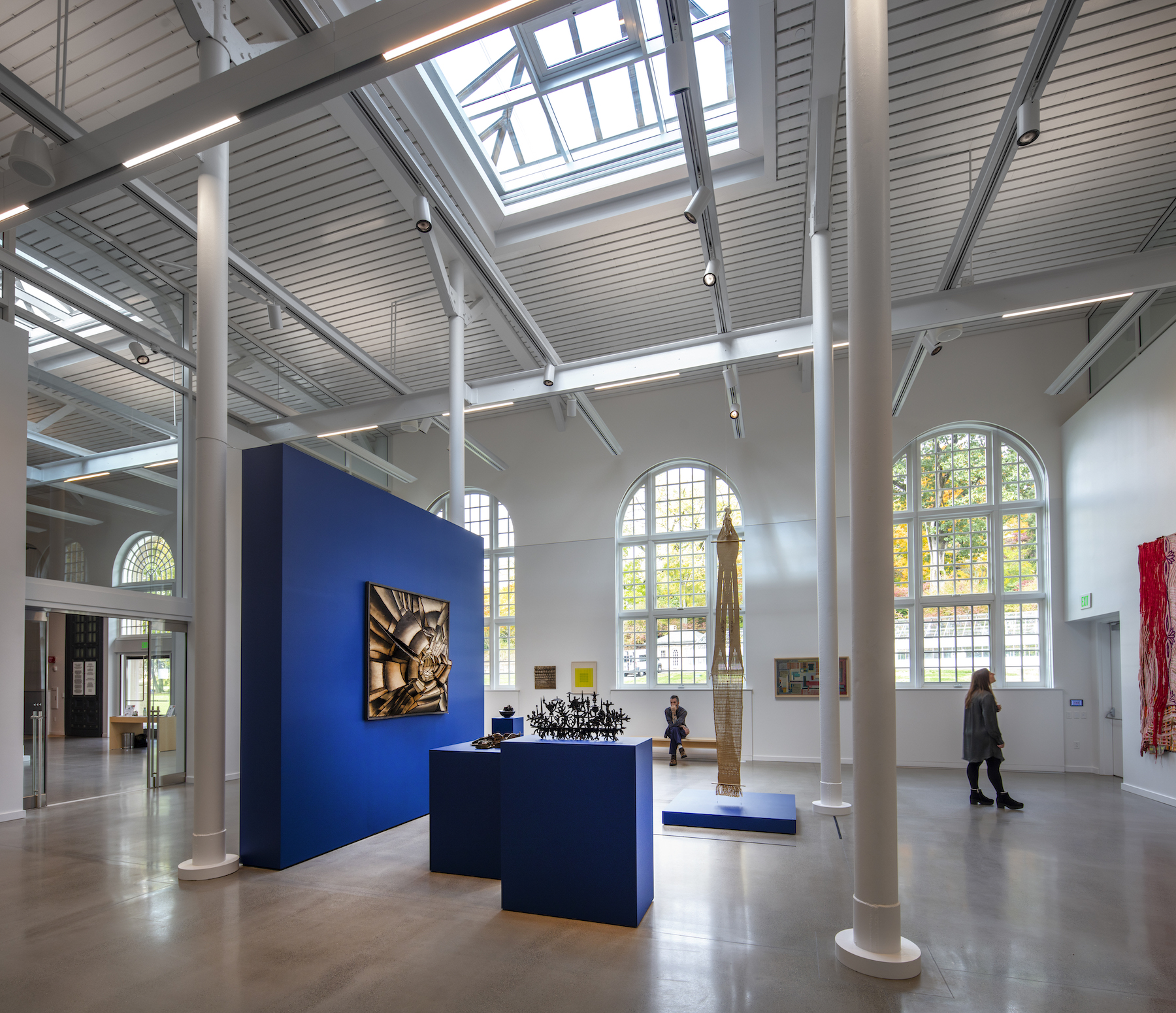
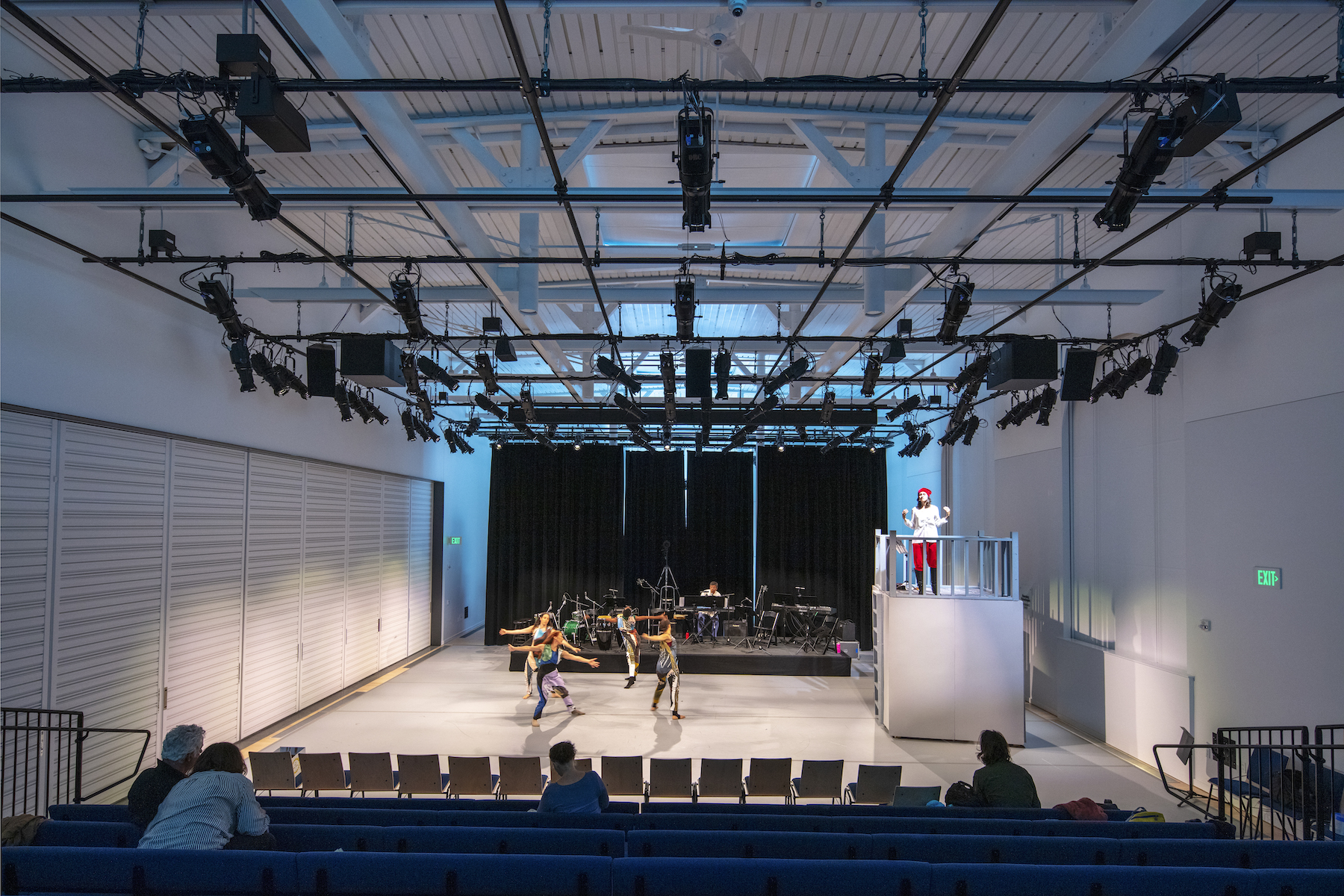
The reno added concrete slab flooring and sectioned off different areas of the building’s interior for specific performance or installation spaces. The building team added stage and rehearsal studios that can pivot 90 degrees. Also added were 40-ft-wide doors in the back of the building.
The design and construction aspired the building to achieve net-zero energy performance and LEED Platinum certification. The building’s green features include energy efficient windows, solar panels, and rainwater recapture.
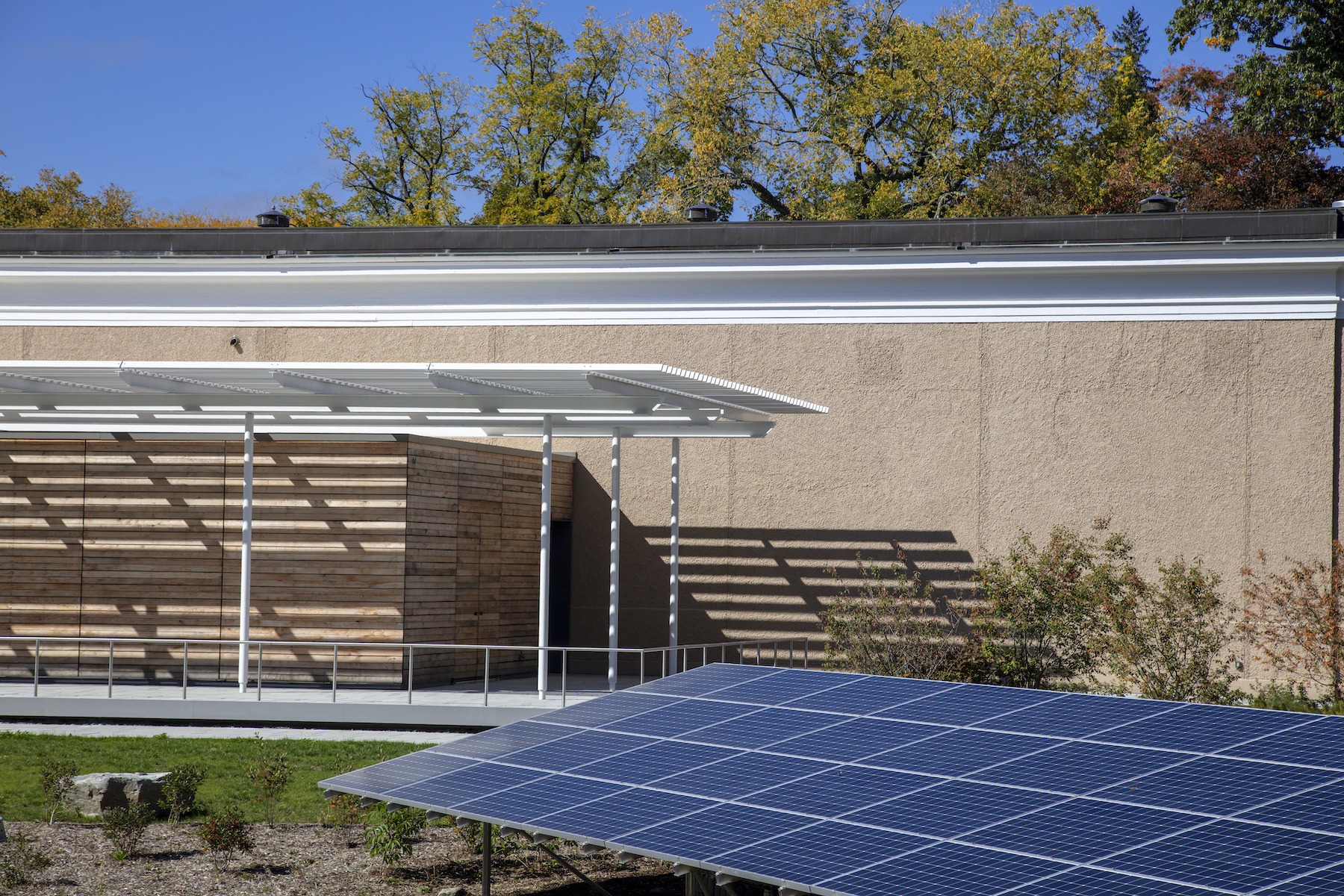
The building team on this project included York Construction Corp (CM), Silman Structural Engineers (SE), Langan Engineering (CE), Altieri Sebor Wieber (MEP/FP), and Envoie Projects (owner’s rep.).
Related Stories
| Nov 15, 2013
Metal makes its mark on interior spaces
Beyond its long-standing role as a preferred material for a building’s structure and roof, metal is making its mark on interior spaces as well.
| Nov 13, 2013
Installed capacity of geothermal heat pumps to grow by 150% by 2020, says study
The worldwide installed capacity of GHP systems will reach 127.4 gigawatts-thermal over the next seven years, growth of nearly 150%, according to a recent report from Navigant Research.
| Oct 30, 2013
15 stellar historic preservation, adaptive reuse, and renovation projects
The winners of the 2013 Reconstruction Awards showcase the best work of distinguished Building Teams, encompassing historic preservation, adaptive reuse, and renovations and additions.
| Oct 30, 2013
11 hot BIM/VDC topics for 2013
If you like to geek out on building information modeling and virtual design and construction, you should enjoy this overview of the top BIM/VDC topics.
| Oct 28, 2013
Urban growth doesn’t have to destroy nature—it can work with it
Our collective desire to live in cities has never been stronger. According to the World Health Organization, 60% of the world’s population will live in a city by 2030. As urban populations swell, what people demand from their cities is evolving.
| Oct 18, 2013
Researchers discover tension-fusing properties of metal
When a group of MIT researchers recently discovered that stress can cause metal alloy to fuse rather than break apart, they assumed it must be a mistake. It wasn't. The surprising finding could lead to self-healing materials that repair early damage before it has a chance to spread.
| Sep 24, 2013
8 grand green roofs (and walls)
A dramatic interior green wall at Drexel University and a massive, 4.4-acre vegetated roof at the Kauffman Performing Arts Center in Kansas City are among the projects honored in the 2013 Green Roof and Wall Awards of Excellence.
| Sep 19, 2013
What we can learn from the world’s greenest buildings
Renowned green building author, Jerry Yudelson, offers five valuable lessons for designers, contractors, and building owners, based on a study of 55 high-performance projects from around the world.
| Sep 19, 2013
6 emerging energy-management glazing technologies
Phase-change materials, electrochromic glass, and building-integrated PVs are among the breakthrough glazing technologies that are taking energy performance to a new level.
| Sep 19, 2013
Roof renovation tips: Making the choice between overlayment and tear-off
When embarking upon a roofing renovation project, one of the first decisions for the Building Team is whether to tear off and replace the existing roof or to overlay the new roof right on top of the old one. Roofing experts offer guidance on making this assessment.


